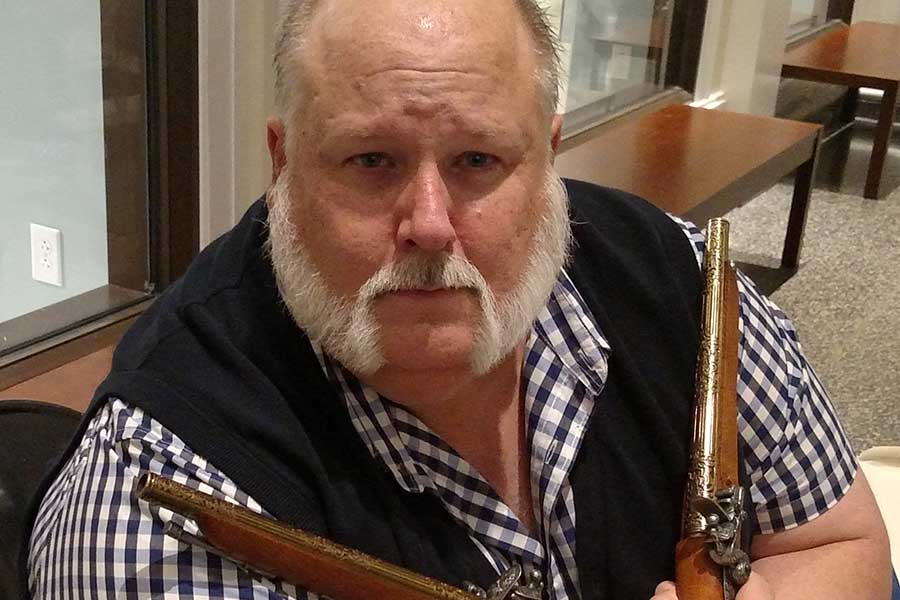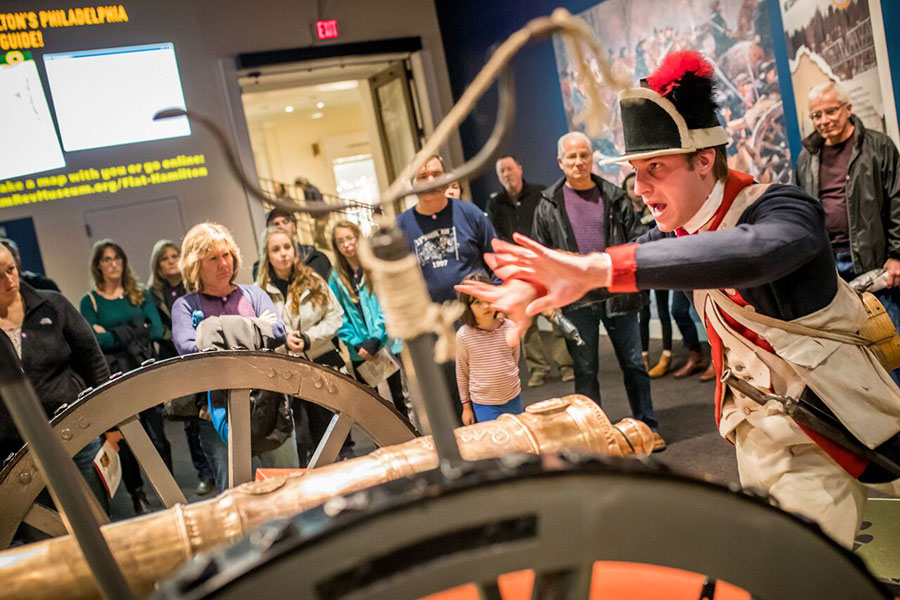The Museum of the American Revolution has opened its interactive “Hamilton Was Here: Rising Up in Revolutionary Philadelphia” exhibition experience, and with it comes rarely seen historical treasures examining the aggregate impact of Alexander Hamilton.
This founding father of the United States and its financial system — he was the first secretary of the Treasury and established the first national bank — is celebrated here with letters and essays dealing with everything from 1797’s Reynolds Pamphlet and Hamilton’s 95-page refutation of public-corruption charges regarding his accused adultery to the handwritten regulations for his duel with Aaron Burr.
The duel, which killed Hamilton, is commemorated in everything from statues of the duelers in the museum’s front window to an entire section dealing with the rivalry, where visitors can walk the paces taken during the infamous battle.

Jay Duckworth Photo: A.D. Amorosi
“Hamilton built this country,” said Jay Duckworth, props master for the Tony Award-winning “Hamilton An American Musical” during its Broadway run. The out Duckworth is also the longtime props master at New York City’s Public Theater.
Carting with him all sorts of props such as the period pistols he crafted for Lin Manuel-Miranda’s musical to the cases they were carried in on stage to the hand-carved candles that lit the way for Hamilton’s wife, Eliza, to burn her husband’s letters when wounded by his infidelity, He spoke of the career intersection that brought him to Lin-Manuel Miranda (mutual friends at the Public) and of his roots in carpentry.
Duckworthy, calling himself a “proptologist,” said the secret to great prop mastery is in “remaining seamless” on stage, but, was quick “to let people know about this prop art form because the behind-the-scenes of theater is crucial.”
Talking about the staged Eliza Hamilton moment, Duckworth comes across as dramatic as any actor who won a Tony for “Hamilton.”
“I used different textures of paper, and weights, the likes of which they would have used at that time. I needed paper that would burn in two minutes and nine seconds, the length of the entire song. That’s what I do — it’s like any actor having to hit his mark.”
Duckworth completed scads of research and reconnaissance time in Philadelphia before the Broadway run of “Hamilton,” mining the minutiae, and that of this founding father, in a search for buried treasure. Along the way, he wound up finding hidden information geared toward gay history.
“I found out all kinds of great history in Philly — for example, do you know what a ‘mate’ is in pirate lore? Marriages between men were legal on pirate ships. If you were a mate on a pirate’s ship and your partner died, you shared in everything they had — all their possessions. It was a legally binding contract. Homosexuality was OK, then, on the open sea — for pirates.”
Duckworth found further evidence of gay Philadelphia in Hamiltonian times when he came across paperwork from a German general Baron von Steuben, an openly gay officer.
“He could not be open in his native Germany, but was able to be out in America because George Washington saw how valuable he was to the revolutionary cause.” n
“Hamilton Was Here: Rising Up in Revolutionary Philadelphia,” runs through March 17 at the Museum of the American Revolution, 101 S. Third St.; 877-740-1776 or AmRevMuseum.org.

